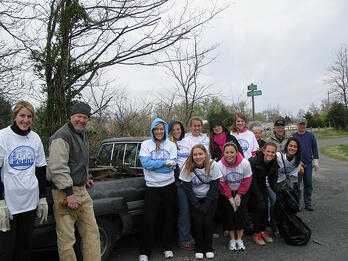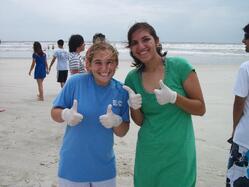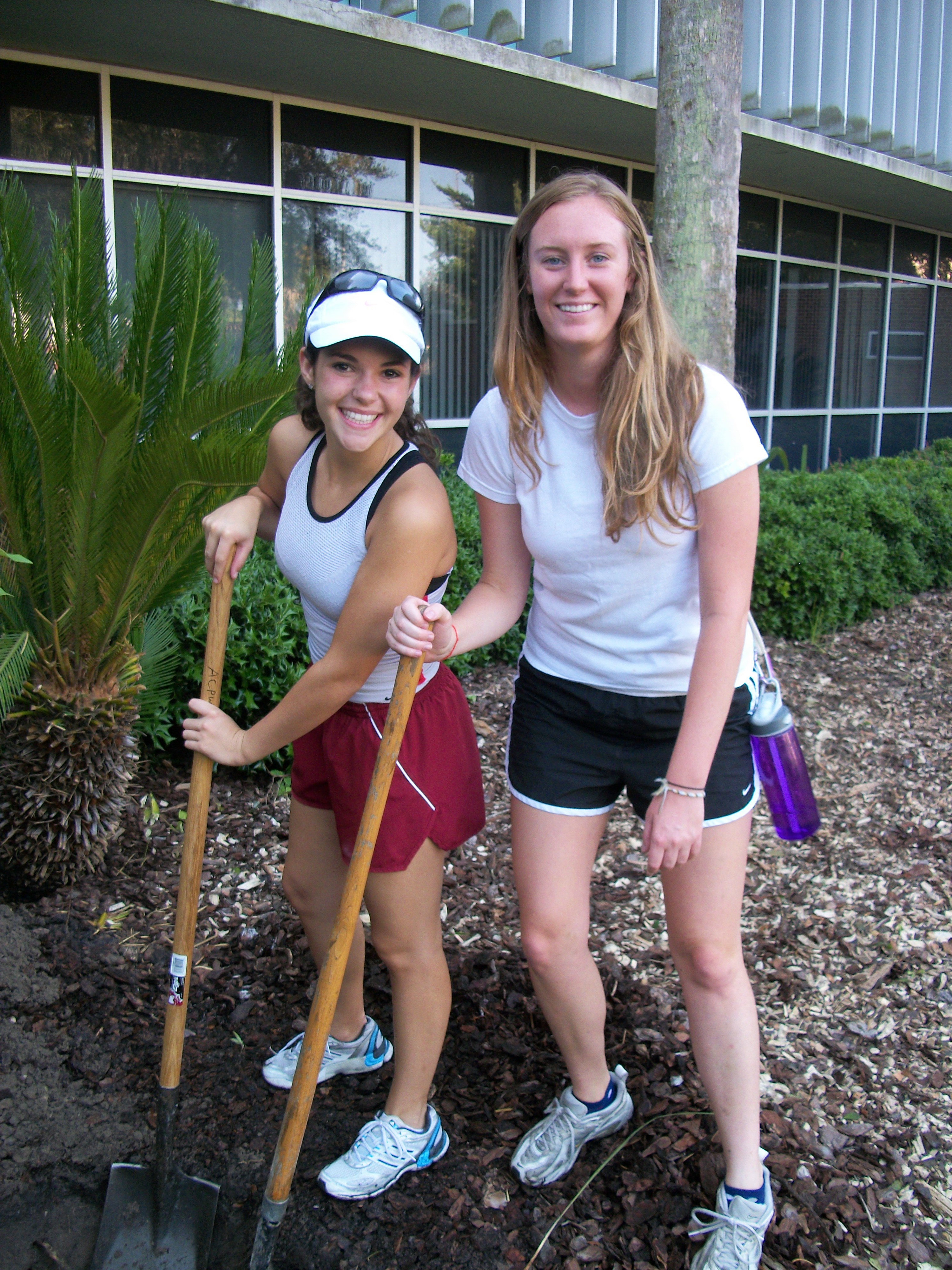This post was written by NobleHour Special Contributor Natasha Derezinski-Choo, a student at Grimsley High School in Greensboro, NC.
The end of summer is approaching. For me, this also means that soon my senior year of high school will begin, and I am troubled by the question, how did we get here? When the topic enters conversation, I find myself reminiscing with friends about the past three years. We are all wondering, how did we get here? and where did all of that time go? However, the most important question is not about how we arrived, but, where do we go from here? and it is this issue that make senior year such a pinnacle part of high school. So, in beginning to answer the question where do I go from here? I have put together a list of personal, academic, and lifestyle goals for this year.
- Be Myself: Personally, high school has been a time where I have explored what it means to be
 myself. Adolescence is a time when a person begins to become self-conscious, which can at times be difficult if this entails a decrease in confidence or the pressure to conform to social norms. However, when I began high school and started at a new school with new people, I started to shed my shyness and to act more like myself around others rather than follow what I believed was expected of me. This year, as I finish the last year of high school and begin to make concrete decisions about where do I go from here? I plan to continue to work on being comfortable being myself and deciding how my actions can better reflect the type of person I want to be.
myself. Adolescence is a time when a person begins to become self-conscious, which can at times be difficult if this entails a decrease in confidence or the pressure to conform to social norms. However, when I began high school and started at a new school with new people, I started to shed my shyness and to act more like myself around others rather than follow what I believed was expected of me. This year, as I finish the last year of high school and begin to make concrete decisions about where do I go from here? I plan to continue to work on being comfortable being myself and deciding how my actions can better reflect the type of person I want to be.
- Start a Volunteer-Based Club: Throughout high school, I have been involved in volunteerism, through both school clubs and community organizations. This year, I am working on starting a club in my own school which will incorporate service work in which students will help each other students in our school community with completing writing assignments and learning proofreading skills.
- Meet Someone New: I am always looking tomeet and interact with new people. I have been going to school with the same group of people and have many good friends, but there are still people in our school community I do not recognize. Regardless of who your friends are now, new friends can still be made in unexpected ways, and I hope that this year I will continue old friendships and start some new ones too.
- Track Volunteer Hours: I began tracking my service-learning hours in high-school because of the service-learning diploma program in our district. Since then, volunteering as become more than checking off a box. It has become a vital and meaningful part of my life, and hour-tracking is my way of looking at my impact on the community. I plan to document all my hours before graduation to earn recognition for my service work and to view my progress over four years.
- College Applications: This is pretty daunting process, but now there is no avoiding it. My goal is to manage my time, submit the best representation of myself possible, and to avoid leaving everything to the last minute.
- Read More: Each year, school becomes more difficult and challenging. I think I spend less and less time reading for leisure because of a demanding schedule. Sometimes the large amount of reading I do for school takes away from reading I would like to do for myself. However, I think there are many benefits to reading, and I am usually adding more books to the list of books I want to read than I am reading. I want to make time for the leisure reading I once had time for daily. (Check out some of these interesting reads on volunteerism and social good).
- Say Thank You: The person I am today and the path my life will take after senior year is the culmination of the time and attention of many important mentors and teachers. I intend to express or reiterate my appreciation to these people for helping me have a successful and fulfilling high school experience.
 Give Back: Since freshman year, volunteerismhas become an increasingly important part of my life.This goal goes along with the previous in that volunteering is a way of saying thank you by giving back to the community. This year will be no different, and I will continue to volunteer and search for new organizations to engage my time with.
Give Back: Since freshman year, volunteerismhas become an increasingly important part of my life.This goal goes along with the previous in that volunteering is a way of saying thank you by giving back to the community. This year will be no different, and I will continue to volunteer and search for new organizations to engage my time with.
- Cope with Stress: School is like a never-ending to-do list, and sometimes there are moments when it does not seem possible to complete everything in the time I have. I am usually pretty good at managing stress. For me, the best way to manage stress is to realize that being overly anxious does not ameliorate a situation. Time management is also a way I effectively manage stress. This year I want to expand my management of stress from a mental approach to a physical approach by exercising more and trying to be more balanced health-wise.
- Keep in Touch: After graduation, we will all begin to go our separate ways. With today’s technology and social media, keeping in contact with old friends is easier than ever. However, when I say “keep in touch,” I mean more than just the occasional “selfie” in my newsfeed. What I mean by “keep in touch” is having meaningful conversations and making sure not to lose contact with the people close to me.
- Appreciate Each Moment: There are many events, traditions, and milestones that take place in high school; at our school this includes event such as spirit week, prom, senior tea, convocation, graduation, etc. It will be the last or only chance to savour these memories, and I intend on making the best of each moment.
What are your goals for this school year? How do you plan achieve them? to calculate your progress?
Share in the comments below.
"Schoolgirl with books on head" by CollegeDegrees360 is licensed under CC BY 2.0

 This book explores the inspiring ways that young people are making a career out of making a difference. Martin portrays eight young activists both as flawed, relatable people and extraordinary, inspiring, change makers. She discards the traditional “save the world” and “feel-good” motivations for volunteerism. Instead she approaches service with one question in mind: “How do you create a meaningful life?”
This book explores the inspiring ways that young people are making a career out of making a difference. Martin portrays eight young activists both as flawed, relatable people and extraordinary, inspiring, change makers. She discards the traditional “save the world” and “feel-good” motivations for volunteerism. Instead she approaches service with one question in mind: “How do you create a meaningful life?”









 Economic inequality is the most concerning form of inequality because, and as Tepperman and Curtis explain, in a globalized and industrialized world economy, the gap between the developed and developing world presents the greatest boundary to achievig social equality. Tepperman and Curtis predict that inequality is a virtually insoluble problem.
Economic inequality is the most concerning form of inequality because, and as Tepperman and Curtis explain, in a globalized and industrialized world economy, the gap between the developed and developing world presents the greatest boundary to achievig social equality. Tepperman and Curtis predict that inequality is a virtually insoluble problem. 


 "
"


.jpg?width=280&height=374&name=101_2388(1).jpg)




